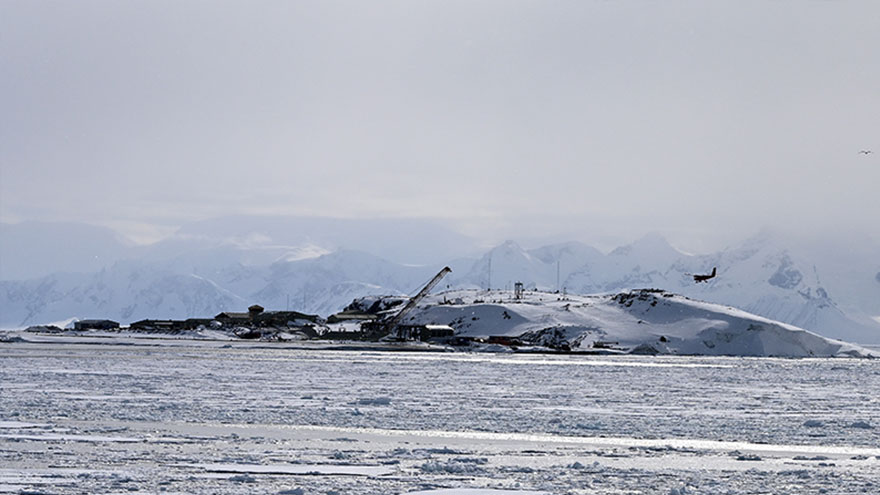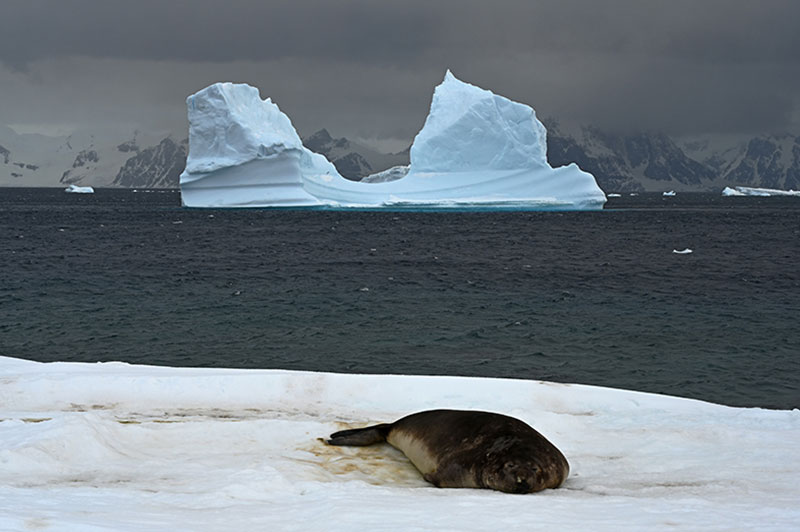A Quick Visit to Rothera Station
November 26, 2019 | Dr. Wade Jeffrey, Director of CEDB | wjeffrey@uwf.edu

Last Saturday, in a gesture of international relations and good will, the station leader at the UK’s Rothera Station invited us to dinner and to tour the facility. Of course, we accepted and 17 of us went over while an equal number of British scientists and staff came out to visit our shop. I think we got the better deal – we were fed a great meal, got to buy Rothera swag in their store, and visit other essential parts of the station. Rothera is the largest British Antarctic research station and the hub for its field programs. Its located on the backside of Adelaide Island on Marguerite Bay. Currently, there are over 100 residents. It is much larger than the US Palmer Station and supports a small airstrip that can handle Twin Otters and Dash 7 aircraft that make routine fights to South America as well as to deeper research field sites. Here is a photo of Rothera taken from the ship – note the plane coming for a landing. We walked across the airstrip after arriving by zodiac and smiled at the elephant seals lining the edge of the runway.
The station is currently undergoing a modernization program to update labs and dormitories and build a new pier to support the arrivals of the British Antarctic Survey’s new ice breaker, the RSS Sir David Attenborough. You might remember this ship – there was a pubic contest to name the ship and “Boaty McBoatface” won… British decorum suggested they were better served by naming it after famed environmental documentarian Sir David Attenborough (but “Boaty McBoatface” was used to name one of the un-manned survey vehicles onboard).
One of the highlights of the visit was a walk around Rothera Point – in part because it was a walk (living on a ship, walks are somewhat limited) and also because the scenery was spectacular. We also saw where they have erected monuments to their staff who have lost their lives while working in Antarctica – a bit of a reminder of the harsh realities down here. Here are a few photos taken during the walk. There are a large number of elephant seals there, and apparently, at night it’s not uncommon to find them moving into the station to use the buildings as shelter. After the walk, we stopped by the station lounge and the store – smaller than the Palmer Station store so Christmas shopping was more limited. Dinner on Saturdays is a bit more formal and relaxed – you are expected to dress better (i.e., no T-shirts), there are cloth table cloths, and the food just a step up from the usual….. and they had homemade bread (yes, it’s the little things you notice). Unfortunately, we had to leave after watching a plane arrive at about 930 pm – back in our waterproof clothes and float coats for a ride back to the ship to get ready for another day of sampling.








